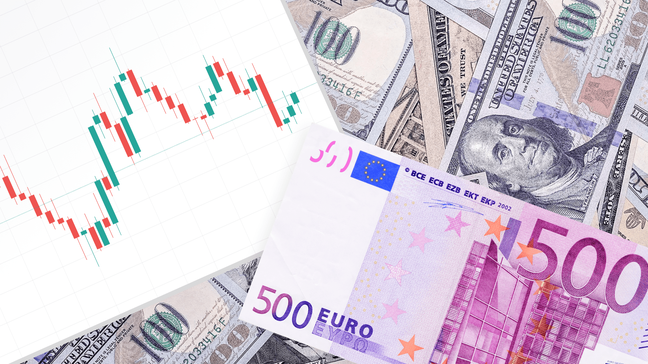The market sentiment remains dicey early Friday as traders await April's key US employment and activity data. However, the recently mixed US data, the Fed’s hesitance for rate hikes, and upbeat equity earnings keep the buyers hopeful.
With this, the US Dollar Index (DXY) braces for the second weekly loss and allows other major currencies and commodities to extend the previous weekly gains.
EURUSD eyes a three-week uptrend while justifying the recent Eurozone GDP while GBPUSD, NZDUSD, and AUDUSD prepare for the second weekly gain. Further, USDJPY snaps a four-week uptrend while posting the biggest weekly loss since November 2022 amid Japan’s efforts to defend the Yen.
Elsewhere, Gold price fails to cheer the softer US Dollar and stays pressured but the Crude Oil recovers from a multi-day low amid mixed catalysts.
Talking about cryptos, BTCUSD signals a five-week downtrend while the ETHUSD prints weekly losses as traders fear more hardships from the US SEC.
Following are the latest moves of the key assets:
- Brent oil defends the previous day’s rebound from a seven-week low, lackluster around $84.70 by the press time.
- Gold stays pressured around $2,300, preparing for the consecutive second weekly loss at the latest.
- The USD Index seesaws at a three-week low, dicey near 105.30 by the press time.
- Wall Street closed with mild gains while the Asia-Pacific shares edged higher. Further, UK and European shares print minor gains during the initial trading hour.
- BTCUSD and ETHUSD both remain indecisive around $59,400 and $2,990 at the latest while preparing for heavy weekly losses.
US Dollar bears keep the reins ahead of key data…
The recent US data hasn’t been promising to the market’s previous chatters about the Fed rate hike. The notion also got less acceptance from the FOMC members and hence exerted downside pressure on the Greenback.
Recently, US Weekly Initial and Continuing Jobless Claims reprinted 1.774M and 208K figures for the last week while the Q1 Nonfarm Productivity deteriorated to 0.3% QoQ versus 0.8% expected and 3.5% prior. Meanwhile, Unit Labor Costs jumped to a one-year high by posting 4.7% growth compared to 3.2% market forecasts and 0.0% prior. On the same line, the US Factory Orders for March also rose to the highest level in four months by flashing 1.6% growth versus 1.2% prior.
Given the mostly unimpressive data from the US, coupled with the Federal Reserve’s (Fed) hesitance in supporting the idea of further rate hikes, despite pushing back the rate cuts to late 2024, exert downside pressure on the US Dollar. With this, the US Dollar Index (DXY) braces for the second consecutive weekly loss, as well as falling the most in a week since early March.
That said, comments from the ECB officials joined better-than-forecast final readings of HCOB Manufacturing PMIs for Germany and the Eurozone to allow the EURUSD to remain firmer, especially when the US Dollar remains pressured.
European Central Bank (ECB) Governing Council Member Yannis Stournaras said that the ECB will probably lower borrowing costs three times this year instead of four while citing the positive surprise from the most recent euro-zone GDP figures. On a different page, ECB Chief Economics Philip Lane said that the bank isn’t committing to any particular rate path while staying data-dependent.
GBPUSD also remains on the front foot despite lacking upside momentum of late as market players keep the US Dollar selling intact ahead of the key US data. It’s worth observing that the OECD’s downbeat UK growth forecasts for 2024, from 0.7% to 0.4%, challenge the Cable buyers.
USDJPY dropped to a three-week low, down for the third consecutive day by the press time, as the Japanese authorities try to pull the Yen from a multi-year low amid the broadly weaker US Dollar. On Thursday, a Reuters report suggested that the Bank of Japan (BoJ) accounts may have spent between ¥3.26 to ¥3.66 trillion on said intervention.
On a different page, hawkish comments from Bank of Canada (BoC) Governor Tiff Macklem joined upbeat Swiss Inflation data to weigh on the USDCAD and USDCHF prices.
The latest concerns suggest higher yields and join the likely consolidation in the US Dollar’s losses to keep the Gold sellers hopeful. That said, famous investors Bill Ackman and Bill Gross suggest an increase in US Treasury bond yields to reach 5.0% in the next 12 months.
The latest World Gold Council (WGC) report shows that total global gold demand was up +3% y/y during the first quarter (Q1) of 2024, hitting 1,238 tonnes to make it the strongest Q1 growth since 2016. The report also cited China as the key driver of demand. That said, the People’s Bank of China (PBoC) bought 27 tonnes of gold in the first three months of the year, taking its reserves to a record high of 2,262 tonnes.
Crude oil recovers from a seven-week low on concerns about the OPEC+’s extension of output cuts. Also underpinning the black gold’s rebound was the upbeat global growth forecast from the Organisation for Economic Co-operation and Development, to 3.1% and 3.2% for 2024 and 2025 respectively versus 2.9% and 3.0% previous forecasts in that order. It should be noted, however, that easing geopolitical tensions in the Middle East has challenged the energy buyers of late.
- Strong buy: USDCAD, USDJPY, US Dollar
- Strong sell: AUDUSD, NZDUSD, GBPUSD
- Buy: BTCUSD, ETHUSD, Nasdaq, Gold
- Sell: DAX, FTSE 100, BTCUSD, EURUSD
US NFP, ISM Services PMI details eyed…
Looking ahead, market players keep an eye on the US Nonfarm Payrolls (NFP) and Average Hourly Earnings, as well as ISM Services Price Paid, for clear directions. Should the US job conditions improve and the price pressure escalates, the US Dollar could reverse the latest weakness. However, negative surprises from the scheduled data won’t hesitate to drown the Greenback and confirm the falling wedge bullish chart formation for Gold that suggests a fresh record high past $2,400.
As per the latest forecasts, the US NFP is expected to rise by 243K versus the previous addition of 303K while the Average Hourly Earnings may ease on YoY to 4.0% from 4.1% while reprinting a 0.3% MoM figures. Further, the US ISM Services PMI is likely improving to 52.0 from 51.4 but the ISM Services Prices Paid has 53.4 prior.
May the trading luck be with you!




